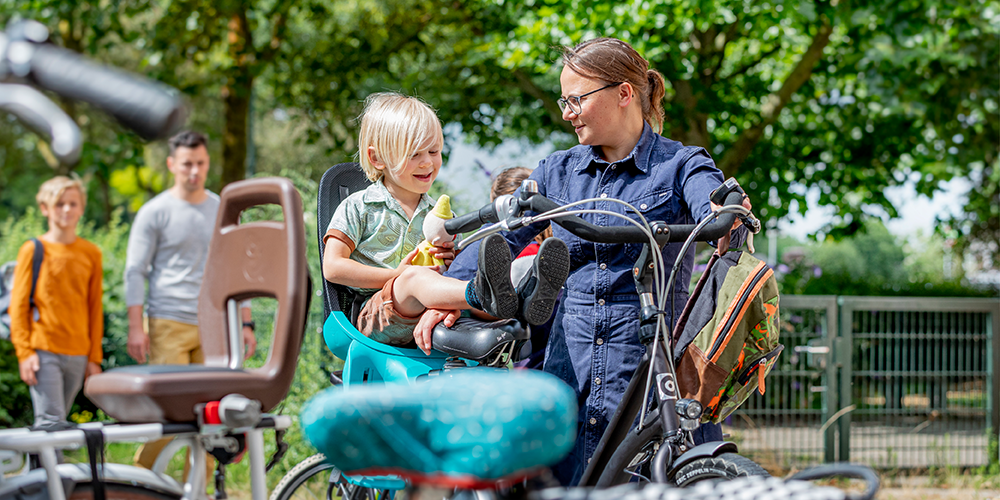What to expect?
You have heard in the media about the problems with the childcare benefits. Or perhaps you have already signed up for a reassessment. What can you expect? This overview sets out the steps you will take.
These steps include the introduction to your personal case officer, the preliminary decision and the final decision.

Step 1: Apply
It is no longer possible to apply.
Step 2: First assessment €30.000
I hear if I'm eligible for a payment of €30.000
The Allowance Restoration Organisation does a first assessment to see if I'm eligible. After the assessment, I receive a phonecall about the outcome. That phonecall comes from phonenumber +31 (0)55 - 543 4704. If I'm eligible, the €30.000 will be transferred to my bank account.
I am informed when it's my turn for an integrated assessment
It may take a while for me to be assigned a personal case officer. If I need help urgently, I can report this via the Service Team Benefit Restoration.
Step 3: Start of the integrated assessment
I get to know my personal case officer
My personal case officer will call me as soon as the Allowance Restoration Organisation starts the integrated assessment of my case. We discuss my situation and am listened to. This can be done by phone, or we can make an appointment to meet each other.
If I have not yet given my preference, my personal case officer asks me how I'd prefer to maintain contact. He or she also asks me if I need an interpreter during the meetings. I am told how I can change personal case officers, if I want to. If I use an authorised representative, the personal case officer will contact this person throughout the process.
Free independent legal assistance
If I would like to have independent legal assistance, I am entitled to a free lawyer. This lawyer will help me during the recovery process. I can apply for this free legal assistance at the Legal Aid Board (Raad voor Rechtsbijstand).
Possibility of calling in additional support
My personal case officer can call in various organisations if necessary, such as my municipality. These organisations can help me with problems that have arisen because of the childcare benefits. For example with debts, work, housing, my family situation or psychological problems.
Working together on restoration
Me and my personal case officer establish my situation. During the process I can indicate that I have additional information or that perhaps another year is missing. We also discuss which arrangement is likely to be the most appropriate for me.
After this interview, my personal case officer ensures that my case is reviewed by an assessment team.
Interim contact
During the reassessment process, my personal case officer regularly informs me of the status of my case. This can be done by phone, e-mail or during a meeting. Whatever I prefer. I can also specify how often I want to be contacted. I receive a written summary after each meeting.

Download leaflet
Step 4: Preliminary outcome
I hear the (preliminary) outcome
My personal case officer tells me the (preliminary) outcome of the reassessment. This is done by phone or during an appointment, depending on what I prefer.
I now know if I'm eligible for compensation or not. And if so, for which years I am eligible for that compensation. It is also possible that I am not entitled to compensation. If I am not offered any compensation the Committee of Experts checks whether this decision is correct and has been taken with due care.
If I am entitled to compensation, my personal case officer will discuss with me how much compensation or what concession I will receive and when. My debt may also be reduced: in that case I am not given a refund, but I have to repay a smaller amount.
The content of this step depends on the outcome.
Explanation of the next steps
I am always told about the next steps and how they affect me.
The content of this step depends on the outcome.
I receive a letter containing the preliminary outcome
I receive a letter of confirmation containing my preliminary result. It explains which scheme applies to me. If I receive a payment, I am given an explanation of how that amount breaks down. That amount is transferred to me at this point.
The content of this step depends on the outcome.
I am given a reflection period
I am given a six-week reflection period to carefully consider everything. It is possible that I realise during this period that I have more information after all. This could mean that I receive a larger payment or that I am entitled to a different scheme. I can always discuss this with my personal case officer.
Step 5: Final decision
I receive the final decision
I am informed that the reassessment of my case is complete. My personal case officer tells me about the next steps that may be taken. This is confirmed in a letter setting out the final decision. This presents the outcome again, stating the final amount to which I am entitled.
Possible objection
If I do not agree with the final decision, I will reach out to my contact person first. They might be able to clearify information and answer questions I have. If I still do not agree with the rejection, my contact person can help me lodge an objection with the Allowance Restoration Organisation. That Organisation submits an intended rejection decision to the Advisory Committee Regarding Objections.
Concluding interview
I have a final interview with my personal case officer. At this point we discuss how the process went and if I have any remaining questions.
Step 6: Actual damages
If I find that I have suffered much more damages than I am being compensated for, I can report this to my personal case officer. He or she then helps me prepare before a committee looks into my case.
